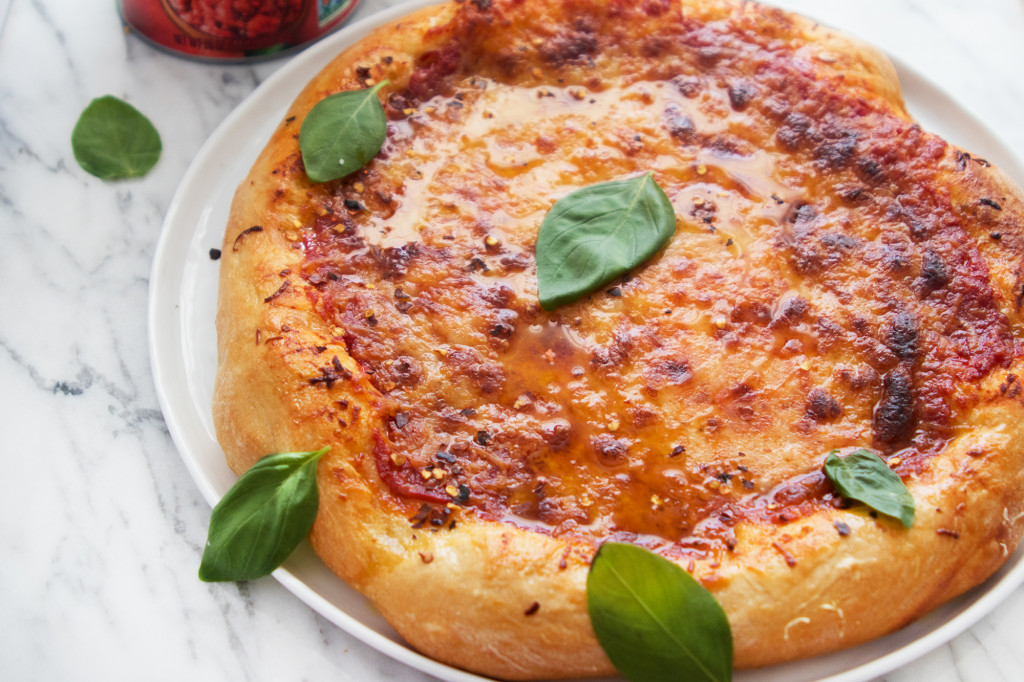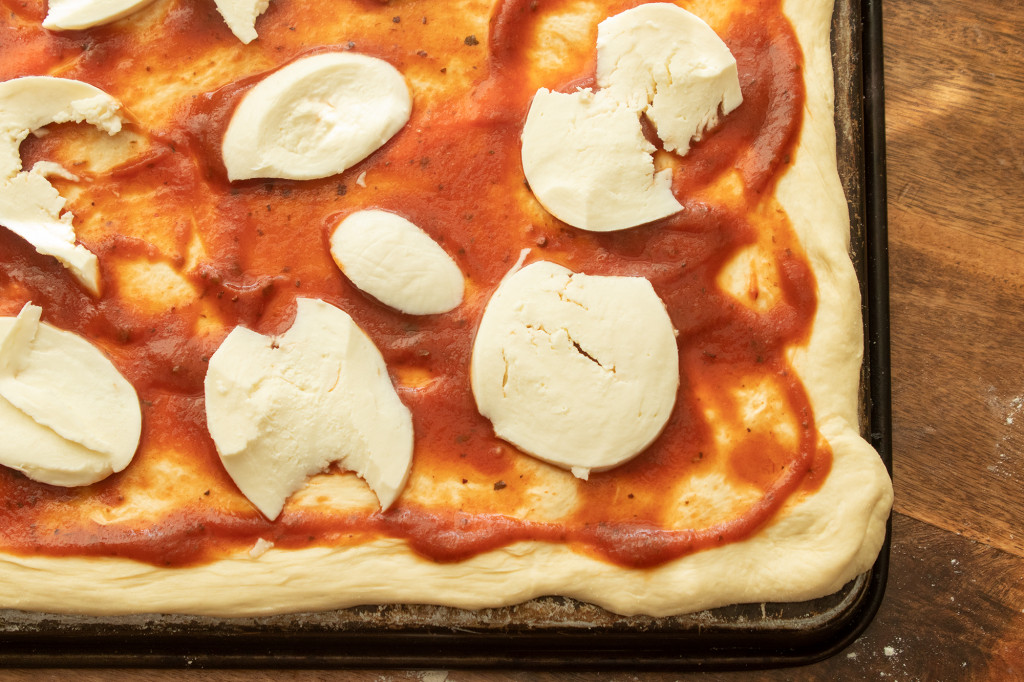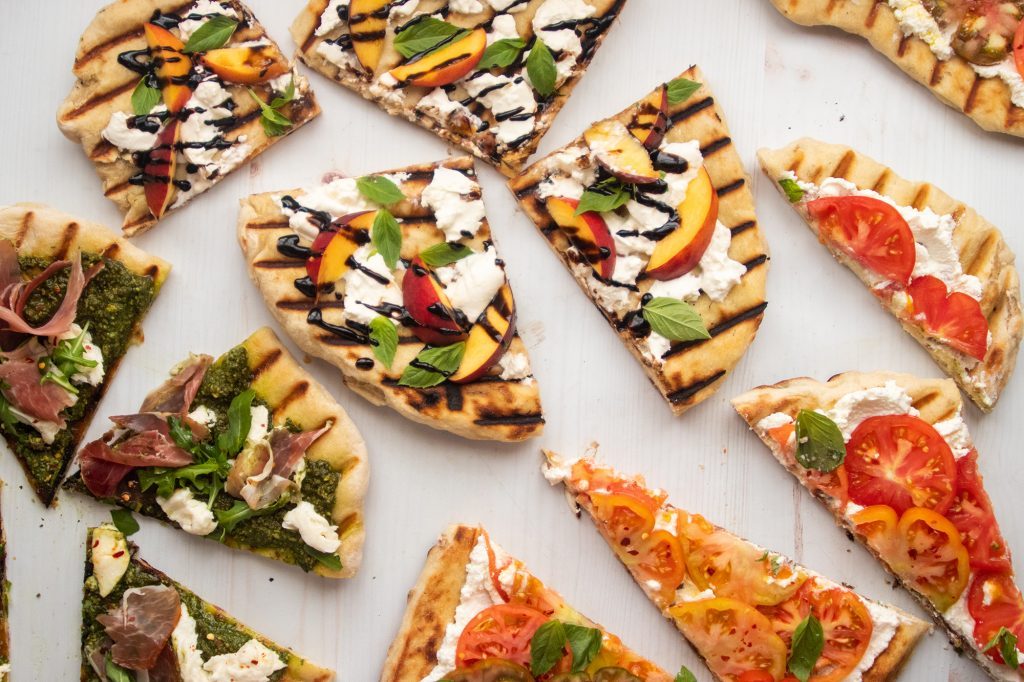The world of mozzarella is vast, and it's not all created equal.
You've got low moisture, high moisture, fresh, pre-shredded, bocconcini, ciliegine... so what type of mozzarella should you be using specifically for pizza? Through recipe developing for the site, shows and even Giada's restaurants, we've got the scoop (or the slice?) on what mozzarella works best for pizza, and why.
When you're in the mozzarella section of the grocery store, you'll see it in various forms:

Type: Pre-Shredded
Verdict: Great for that melty cheese-pull action and all over coverage, but tends to have preservatives and funky additives. Buy organic when you can! Most commonly, you'll see it pre-shredded mozzarella in plastic bags. This type of mozzarella cheese is very low-moisture, and often the pieces are coated in cellulose, a food additive, to keep the shreds from clumping together. In the interest of eating foods as clean and whole as possible, we tend to shy away from pre-shredded types - although we have to say, because of the low moisture and the fact that it's already shredded up, it does melt very nicely for pizza and takes some labor out of the whole process. If you're looking for that perfect cheese-pull action, you won't do better than a bag of good ol' shredded mozzarella.
Type: Low-moisture
Verdict: Can work well, but ensure that you're buying a good quality brand - or else it can taste pretty rubbery and "bouncy". Another type of mozzarella you'll see is low-moisture mozzarella, generally sold in a plastic package as one big piece, and it's not suspended in any water. This dry-packed type of mozzarella is great for pizza, as that low-moisture content helps keep things melty and delicious. You can tear it off in pieces, or shred it on a box grater on the largest grate. Note that the higher quality low-moisture mozz you buy, the less "rubbery" it will ultimately taste. Basically, the less that it feels like the texture of string cheese right off the bat, the better! It should still be fairly soft and white as opposed to that almost plastic-like texture.
Type: Fresh in Brine
Verdict: Can be amazing for pizza, and you'll get those quintessential melty pools of mozzarella. However, you need to take the time to dry it out adequately, or else you'll be left with a cheese-watery pizza. Next, you'll undoubtedly find fresh mozzarella in plastic tubs, suspended in a brine. It can come in a variety of shapes - one or two larger balls, down to the littlest ones known as ciliegine. Fresh mozzarella can be great for pizza, but it requires some prep work. If you take it straight out of the brine and put it on your pie to cook, you'll undoubtedly be left with puddles of cheese-water after cooking that can weaken your crust and muddle the sauce. The solution? Make sure you dry or drain fresh mozzarella for at least 15 minutes before using it on your pizza, and be sure to tear it into smaller pieces. It has a great fresh-milky flavor, but it needs that extra step of time and care to ensure your pizza retains its good structure and flavor! Visually, with fresh mozzarella, you'll get those melty pools of mozzarella (like in Giada's broccoli and sausage pizza, or meatball pizza) as opposed to an all-over coverage.
Type: Burrata
Verdict: So delicious, but don't cook it on the pizza. Bake your pizza fully, then add burrata once it's out of the oven. You might even see burrata - a deliciously rich cheese made of a soft mozzarella shell with a center of fresh cream and curds. It's a magical and delicious thing that can be absolutely amazing on pizza - but here's the caveat, you don't cook it. Cooking burrata straight onto a dressed pizza crust sort of defeats the purpose of that lovely burrata texture, and since you paid extra for it, you should keep it at its best! Burrata is lovely when torn on top of a pizza that's piping hot and fresh out of the oven, so that it gently oozes over the pizza while retaining its creamy texture. Drizzle with some olive oil, sprinkle some pepper flakes and fennel pollen and you've got a great pie on your hands. We digress - is anyone else getting hungry over here?! (time to make Giada's famous pizza dough!)
Conclusion? While all mozzarella is not equal, you can get away with using just about any type on your pizza - just as long as you know how to use it first!


















0 comments